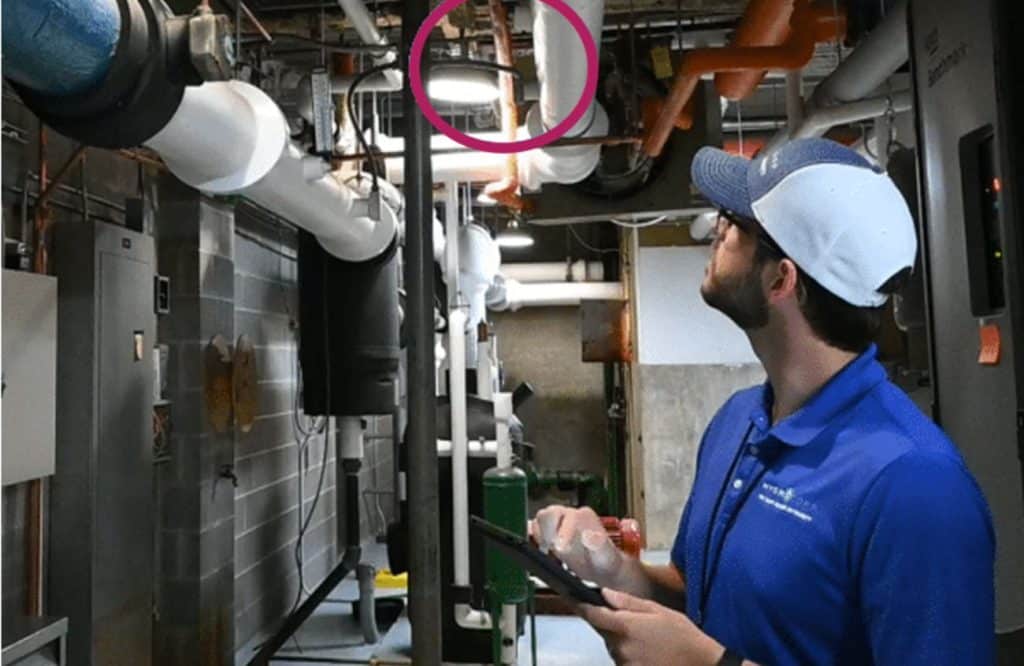Introduction
For Public Water System Certified Water Operators, prioritizing which course subjects to pursue for mandatory continuing education is an important ongoing career task. With the frequent nature of Backflow Prevention and Cross-Connection Control challenges, this subject isn’t just about earning credits to stay up to date on renewing your certifications – it’s directly linked to the compliance and safety of your water system. Here’s how:

Skimming Summary:
Key Points & Takeaways:
- Continuing education on the topics of backflow prevention and cross-connection control can help boost any water utility’s safety and compliance.
- Well-educated water utility leaders and staff will be better equipped to develop and maintain a Cross-Connection Control Program, as well as being able to make accurate corrective action requirements during onsite surveys.
- A well-informed staff of subject matter experts can also spread public awareness at a personal, community level.
The more that staff at a water utility learn about Backflow Prevention and Cross-Connection Control, the more proactive, accurate, and precise they will be in the maintenance and operation of their Cross-Connection Control Program. Knowing about the potential for indiscernible interior damage to backflow prevention assemblies may encourage more frequent, vigilant testing. Understanding the complexities of water dynamics can help your field staff educate and inform water customers and the general public. Memorizing plumbing code requirements will ensure that the appropriate corrective action recommendations are always made. These valuable outcomes ensure both compliance at the state level and increases the overall safety network that minimizes risks and protects the quality of the drinking water.
The Foundation: Educated Water Utility Staff
To build a successful Cross-Connection Control Program, the water utility staff must not only be certified but thoroughly educated on the topic. These dedicated individuals are the frontline defenders of our water supply. They are responsible for managing water treatment, distribution, and ensuring that it remains uncontaminated throughout its journey.
Compliance with Regulations: Water utility staff must be well-versed in the regulations and standards related to cross-connection control and backflow prevention. State and local regulations govern water safety, and compliance is paramount. When staff members are educated about these regulations, they can implement and enforce them effectively, minimizing risks.

Minimizing Risks: Education equips water utility staff with the knowledge to identify potential cross-connection hazards in the field by way of onsite assessments. By understanding the intricacies of the water system, they can proactively assess, monitor, and rectify situations that could compromise water quality. Early detection and prevention are key to minimizing risks.
Proper Corrective Actions: During an onsite assessment, water utility staff need proper education not only to identify risks but also to make the proper requirements for corrective actions. This could include requiring the installation of a backflow prevention assembly at the service connection, require replumbing, or disconnecting a piece of industrial equipment entirely.
The Leadership Link
Thoroughly educated leadership and staff in utility and public works departments is the foundation of any successful Cross-Connection Control Program. These leaders set the tone for the organization, allocate resources, and prioritize safety measures.
Resource Allocation: Leaders who understand the importance of cross-connection control are more likely to allocate the necessary resources, including funding and personnel, to ensure the program’s success. Adequate resources are essential for implementing preventive measures and responding effectively to incidents.
Priority on Safety: Informed leaders make water safety a top priority. They lead by example, emphasizing the importance of compliance and proactive measures. This culture of safety permeates the entire organization, from the top down.
Community Engagement: Informed leadership can also engage with the community effectively. They can communicate the importance of cross-connection control, transparency in water safety measures, and the role of the public in safeguarding the water supply.
The Power of Public Awareness
Public awareness and education are equally vital components of a thriving Cross-Connection Control Program. When a water system staff is well versed in the ins and outs of Cross-Connection Control and Backflow Prevention, they are more prepared to effectively engage water customers onsite, over the phone, and with information on their website. The general public is not only the end consumer but can also contribute significantly to the program’s success.

Understanding the Risks: When the public is educated about cross-connections and backflow prevention, they become aware of the potential risks to their water supply. This knowledge empowers them to take preventive actions within their homes and businesses.
Compliance with Regulations: Informed customers are more likely to comply with state regulations related to cross-connection control. They understand the rationale behind these rules and are more likely to take necessary steps, such as installing backflow prevention devices where required.
Consequences of Inadequate Education
While education is the bedrock of a successful Cross-Connection Control Program, the consequences of neglecting it are severe.
Regulatory Non-Compliance: Water utility staff who are not educated about cross-connection control regulations may inadvertently fail to enforce them. This can result in regulatory non-compliance, which may lead to legal issues and compromised water safety.
False Sense of Security: When water customers are not adequately informed about cross-connections and backflow, they may develop a false sense of security about the safety of their water supply. This can lead to complacency and a lack of vigilance, putting water quality at risk.
Accidental Hazardous Interconnections: Building owners and homeowners who are unaware of the risks may inadvertently create hazardous cross-connections within their plumbing systems. For example, a garden hose connected to a pesticide container can introduce toxins into the water supply. Such accidents can have serious health consequences.
Conclusion
In the realm of water safety, education is the cornerstone of a successful Cross-Connection Control Program. It begins with educating water utility staff on regulations, risks, and corrective actions. Informed leadership ensures that the program receives the necessary resources and prioritization. Public awareness and education empower customers to be vigilant and proactive in safeguarding their water supply.
Actionable Suggestions:
- Sign up for Continuing Education Courses on the topics of Backflow Prevention and Cross-Connection Control at SafeWater EDU!
- Print this 4-page EPA Guide to Cross-Connection Control and share with Water System leadership:
- CLICK HERE to talk with one of our CCC Program Experts!
Neglecting education in cross-connection control has dire consequences, including a false sense of security, accidental hazardous interconnections, and regulatory non-compliance. Therefore, it is imperative that water utility organizations invest in comprehensive education and outreach efforts. When everyone involved, from utility staff to the general public, is well-informed, the result is not just safe water but also peace of mind for all. Water is life, and education is the key to protecting it.

